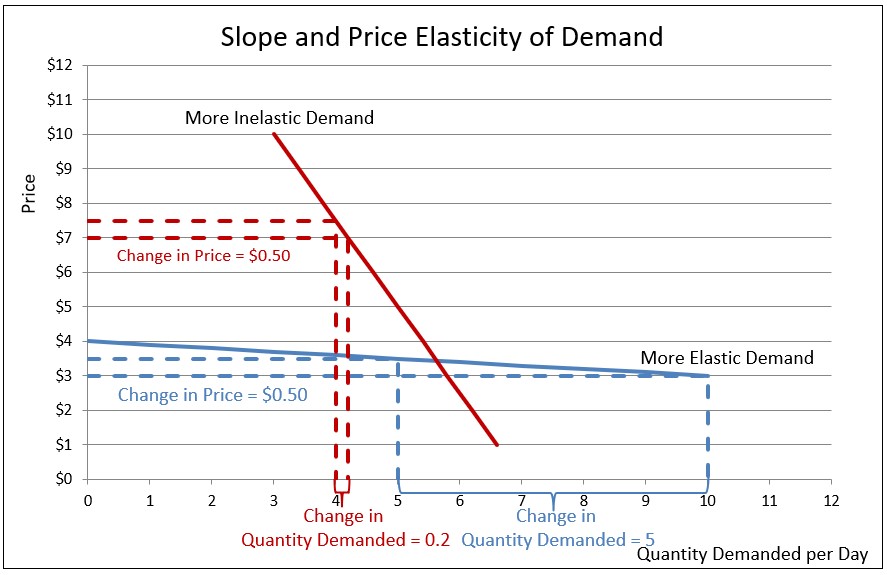An inelastic demand is a good or service's demand that has a price elasticity of demand less than one. The percentage change in the quantity demanded is less than the percentage change in price following a price change.
The formula for the price elasticity of demand is:
A product with an inelastic demand is not as sensitive to a price change as products with an elastic demand. For example, if management increases its price by two percent, they can expect sales to fall less than two percent. A price increase results in an increase in total revenues.
In general, an elastic demand curve is less steep than an inelastic demand curve because the quantity demanded is more sensitive to price swings. The graph below illustrates this point. It contains two demand curves. The red demand curve (more inelastic) is much steeper than the blue demand curve (more elastic). Clearly, a small change in the price has a much greater impact on the change in the quantity demanded for the blue curve.

Necessities and items with few substitutes are inelastic, while luxuries and products with readily available substitutes are elastic. However, when prices continue to increase, a point is eventually reached where even goods or services once deemed inelastic become more elastic. Substantial price increases force consumer behavior to change and producers to develop substitutes, such as developing different types of insulin. The demand becomes elastic when the percentage change in the quantity demanded exceeds the percentage change in price. Companies know they can increase revenues by raising their prices when they have inelastic demand curves. They are also aware that revenues will decrease if they choose to increase their price on the elastic portion of their demand curve.
Watch as two budding entrepreneurs quickly learn that they can increase their revenues by increasing their price on the inelastic portion of their demand curve, but when the demand for hot chocolate becomes elastic, their revenues decrease after increasing their price.
Price Elasticity of Demand – How Consumers Respond To Price Changes
Demand – The Consumer's Perspective
Changes in Demand – When Consumer Tastes Change
Supply and Demand – Producers and Consumers Reach Agreement
Price Elasticity of Supply – How Producers Respond to a Price Change